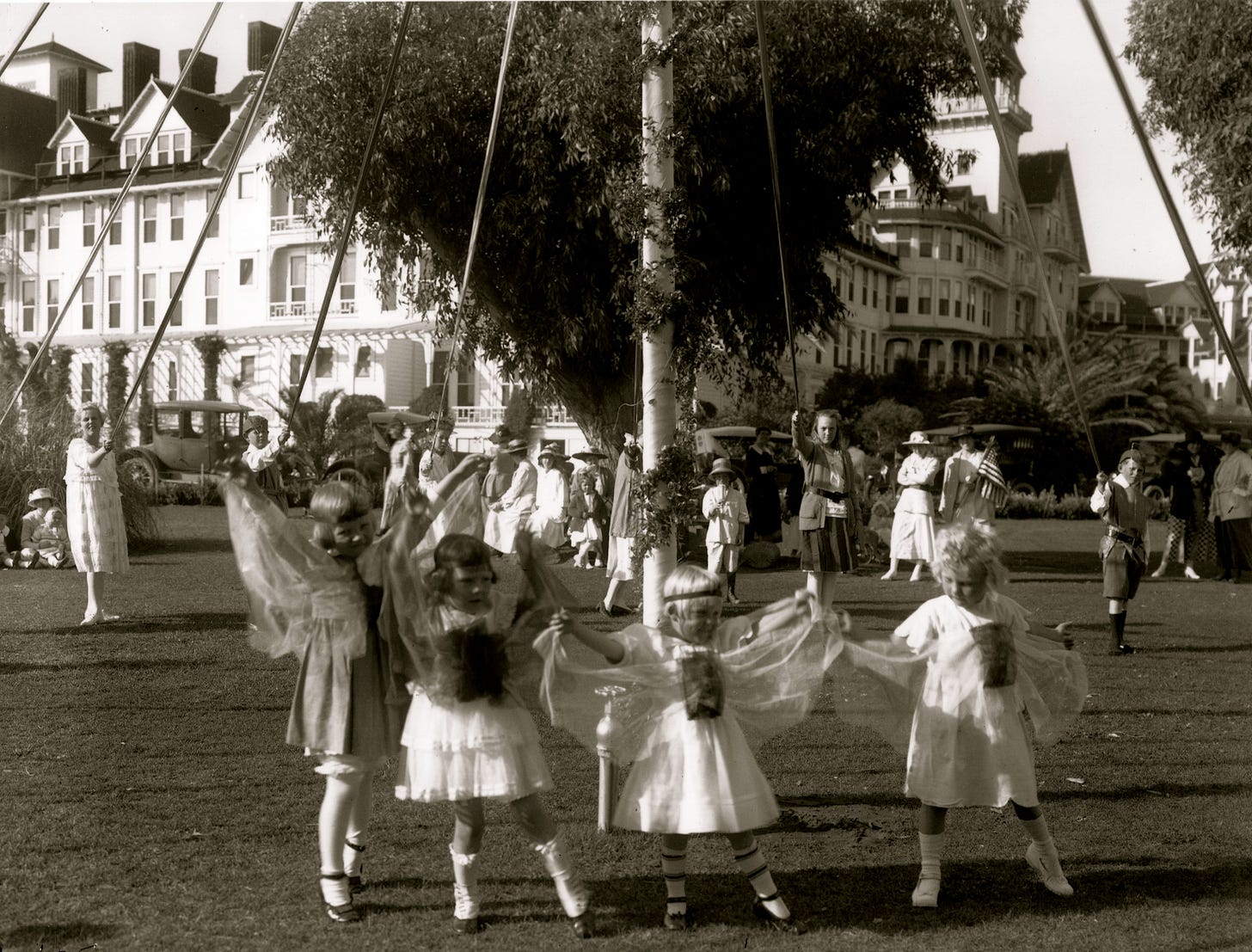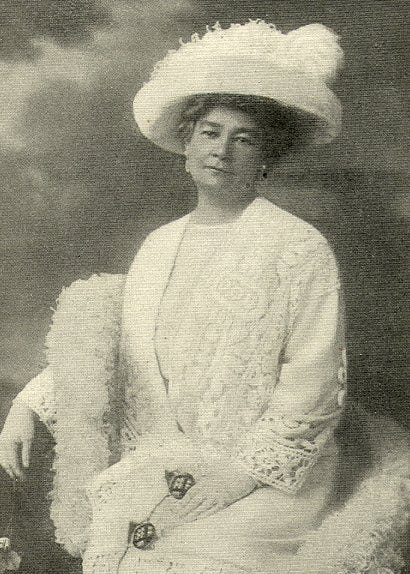Since its inception, Coronado has been a place of movers, shakers and dreamers. And while most people know names like Elisha Babcock, Hampton Story and Larry Lawrence, Coronado also had numerous notable women who left their mark on the city.
In honor of Women’s History Month, we are acknowledging six remarkable women in Coronado history.
Lou Bigelow
Lou Bigelow arrived in Coronado in 1915 to help photographer Roland Reed open a studio during the Panama-California Exposition in San Diego. They had both come from Montana, and after a few months, he returned, selling his photography business to Bigelow. She stayed, running the Lou Goodale Bigelow Studio. She soon had a reputation as a portrait photographer that could capture her subjects with a glowing softness without losing detail.
Over the years, she had a steady stream of rich and famous clients. One of them was Wallis Spencer, who became known as the woman who caused England’s Prince Edward to abdicate the throne. At the time of the photo sessions, around 1920, she was married to Earl Spencer, the first commanding officer of North Island. Bigelow had a 16-by-20-inch print of Spencer hanging in her studio for many years, chosen as an example of a smart woman, beautifully posed. When the scandal with Prince Edward broke, Bigelow remembered the young Navy wife and sent the print of Simpson to her friend, San Diego Union society columnist Eileen Jackson. The image was circulated internationally, adding to Bigelow’s reputation as a photographer.
Bigelow retired in 1948, moving to a ranch in El Cajon with her sister and brother-in-law. She died in 1968, and though she left behind a legacy of work, a public portrait of the talented photographer does not exist.
Katherine Carlin
Katherine Carlin moved to Coronado in 1928 at the age of 25 with her husband, Cmdr. Thomas Carlin. She lived here for nearly 60 years until her death in 1986. Carlin, an enthusiastic champion of her community with a keen interest in history, helped found the Coronado Historical Society in 1969. Along with her co-founder Bunny MacKenzie, she lobbied to preserve the city’s historical homes.
She also spent years compiling the history of Coronado, becoming the city’s unofficial historian. After her husband’s death in 1967, she spent time interviewing longtime residents and compiling newspaper clippings. By 1986, she had filled 20 notebooks, preserving history at a time when the city was rapidly evolving. Her family enlisted the help of Ray Brandes, to turn her extensive research into the book “Coronado: The Enchanted Island,” which is still popular today. She also had volumes of additional notes and materials, including rare books, which were donated to the Coronado Historical Association, offering insights into Coronado’s past, which would have been lost without her.

Bunny MacKenzie
Bunny MacKenzie was a lifelong Coronadan. She was born in a little beach cottage on Tolita Avenue on Feb. 22, 1912. She was the oldest of four kids and attended a number of schools growing up, including the Beach School at the Hotel Del, where she learned to dance in the ballroom. She also attended Coronado public schools and Francis Parker High School, which required taking the ferry and the trolley to get to Mission Hills.
At age 23 in 1935, McKenzie started Miss Bunny’s Preschool at her family’s home, before moving the school to its longtime location at 411 Orange Ave. in 1938. She operated the school for more than 40 years, teaching a few generations of Coronado kids. In 1936, she married Charles MacKenzie, who was from Scotland. They had two children, Cindy and Alec.
In a Nov. 6, 1986, Coronado Eagle & Journal story, she recalled the 1920s when the Prince of Wales visited Coronado and Charles Lindbergh was celebrated at the Hotel Del. She had wonderful memories of Tent City where she walked to the end of the 700-foot-long pier to view Navy ships anchored offshore. She swam at the heated saltwater plunge and visited the Japanese tea room, billiard parlor, ice cream parlor, dance pavilion, bowling avenue and movie house as well as the merry-go-round, which is now in Balboa Park.
When the San Diego-Coronado Bridge was under construction, MacKenzie headed up the Committee of 1886 to save one of the beloved ferry boats. Ultimately, the project failed, but the Committee of 1886 became the Coronado Historical Association. With MacKenzie as the first president, the group helped save the Oxford Boarding House and the Coronado Ferry Ticket Booth, among many projects. MacKenzie loved Coronado and spent her retirement fighting for historic preservation.
MacKenzie died at her home in Coronado on May 3, 2002, at the age of 90.
Madame Ernestine Schumann-Heink
The world-renowned opera singer Madame Ernestine Schumann-Heink called Coronado home for many years. Born Ernestine Amalie Pauline Rössler in the Bohemian region of the Austrian Empire near Prague, she was identified as a prodigy by the time she was 15.
Her remarkable 60-year career took her around the globe. In her prime, she was called the world’s greatest contralto, and her wide vocal range lent itself to the operas of Richard Wagner. In 1915, she opened the Panama-California Exposition, singing at the Spreckels Organ Pavilion, and two years later, she officially closed the exposition at midnight on Jan. 1, 1917.
Schumann-Heink and five out of her eight children moved to the United States in 1904. During World War I, she had three sons in the military. Two were American soldiers and one was in the German army. Throughout her life, she was devoted supporter of the U.S troops, giving her time generously, endearing her to the men, who called her “Mother.”
She bought a home in Coronado in 1925 and lived there for most of the rest of her life. In a 1928 interview with the Eagle & Journal, Schumann-Heink described Coronado “as colorful as a Spanish shawl, with its brilliant awnings and saucy sprays of vivid flowers flaunting their exotic beauty to the tempered breeze from adobe and stucco walls. Then there is a glimpse of sea, and of warships in the bay and the skyline of San Diego beyond.”
Schumann-Heink was married three times. Divorced, widowed and divorced again, she was mother to two daughters and six sons. Her last name was derived from her first two husbands.
She died on Nov. 17, 1936, in Hollywood at age 75. Funeral services were held with full military honors, directed by the American Legion and Disabled American Veterans. She is buried at Greenwood Cemetery in San Diego.

Sybil Stockdale
Sybil Stockdale was a Navy spouse, raising four boys while her husband, Jim, was deployed to Vietnam. Her world changed when Jim Stockdale was shot down and became a prisoner of war. She and fellow POW wives made history when they were not willing to follow the orders of the military to sit quietly and wait. Instead, they rallied other POW wives to demand information about their husbands and fight for their safety. As the first leader of National League of Families of American Prisoners and Missing in Southeast Asia, Stockdale worked diligently behind the scenes at first. She soon ended up on the national stage, meeting with Secretary of Defense Melvin Laird lobbying to change the “keep quiet” policy. Once the public became aware of allegations of POW torture, Stockdale was an assertive spokesperson to improve the conditions of her husband and the other prisoners. She testified at the U.S. House of Representatives Committee on Foreign Affairs.
After Jim Stockdale’s homecoming from Vietnam in 1973, the two eventually wrote a book together titled “In Love and War.” The book is the story of Jim’s experience in Vietnam and Sybil’s life back home, juggling the demands of being a wife of a POW and a mother, while making history on the national stage, ultimately finding her place in history. Sybil Stockdale was the recipient of the Navy Distinguished Public Service Award, the highest award given by the Department of the Navy to a civilian. She died on Oct. 5, 2015, and was laid to rest next to her husband in Annapolis, Maryland, at the U.S. Naval Academy Cemetery.
Emma Thompson
Well-read and educated, Emma Thompson was a trailblazer in many ways, becoming a stalwart in Coronado’s early African-American community. In 1892, she married Gus Thompson and the two started numerous successful businesses in Coronado, including a livery stable on their C Avenue property. Both were active in civic, political and religious affairs. When California gave women the right to vote in 1911, Thompson was one of three African American women in Coronado to register to vote in 1912. She raised three successful children, ran a lunch counter at Tent City and traveled to Europe as a maid for a local socialite. In 1921, she wrote a story for the Eagle & Journal on a jury trial about a vicious dog. The story, filled with dry humor, was the only one published by her. The Thompsons moved to San Diego in 1938, building another home on 32nd Street. After Gus Thompson died in 1955, Emma Thompson sold the Coronado property to the Chinese American Dong family, who had been renting the property since 1938. She died in March 1958.
Compiled by Coronado 365 Magazine editors, Leslie Crawford and Martina Schimitschek.





